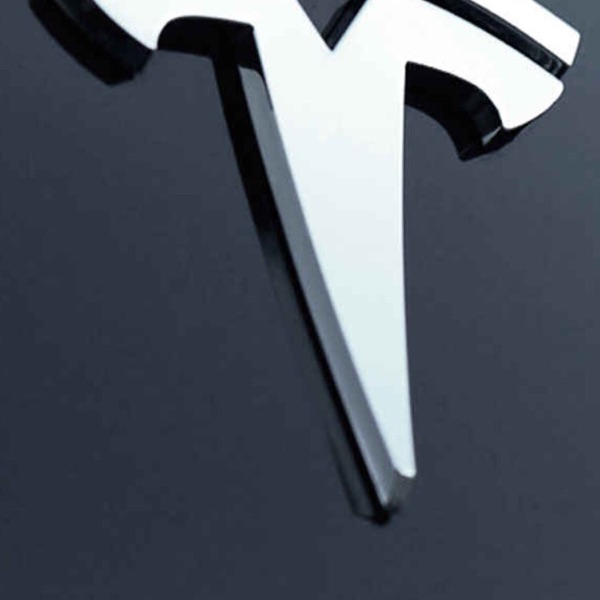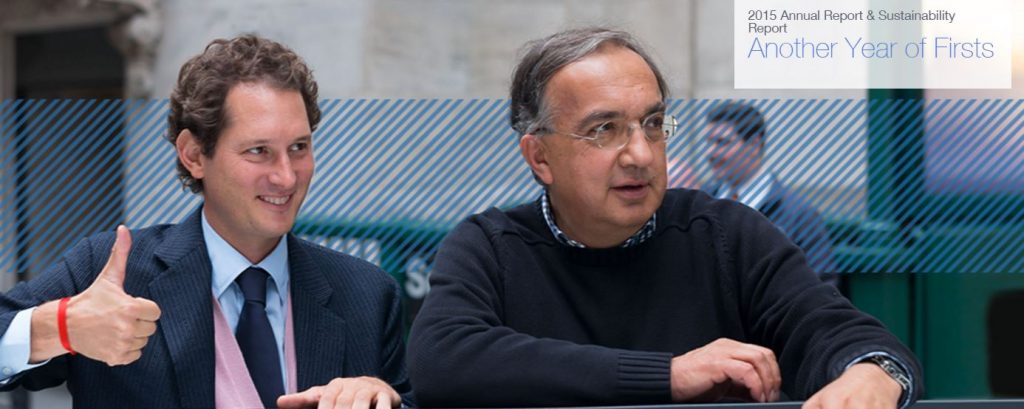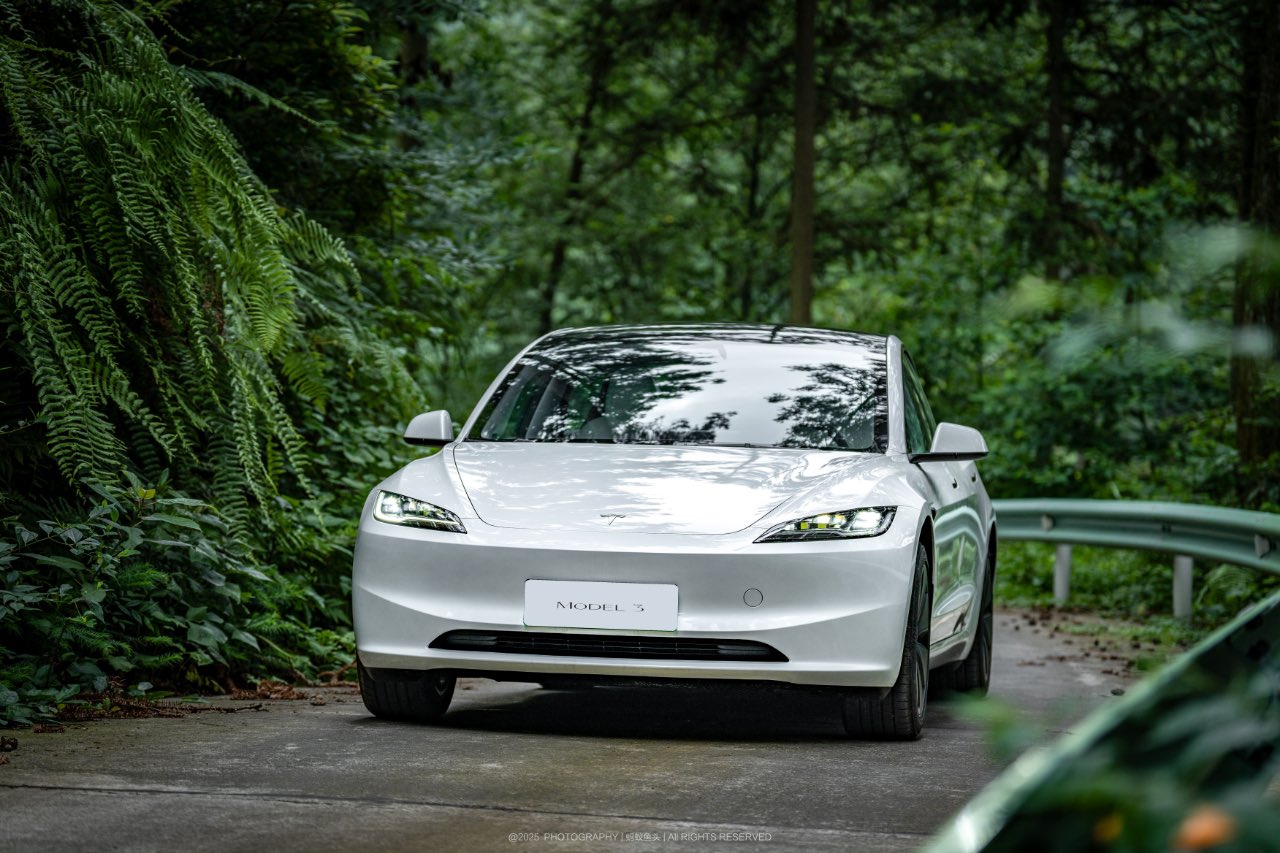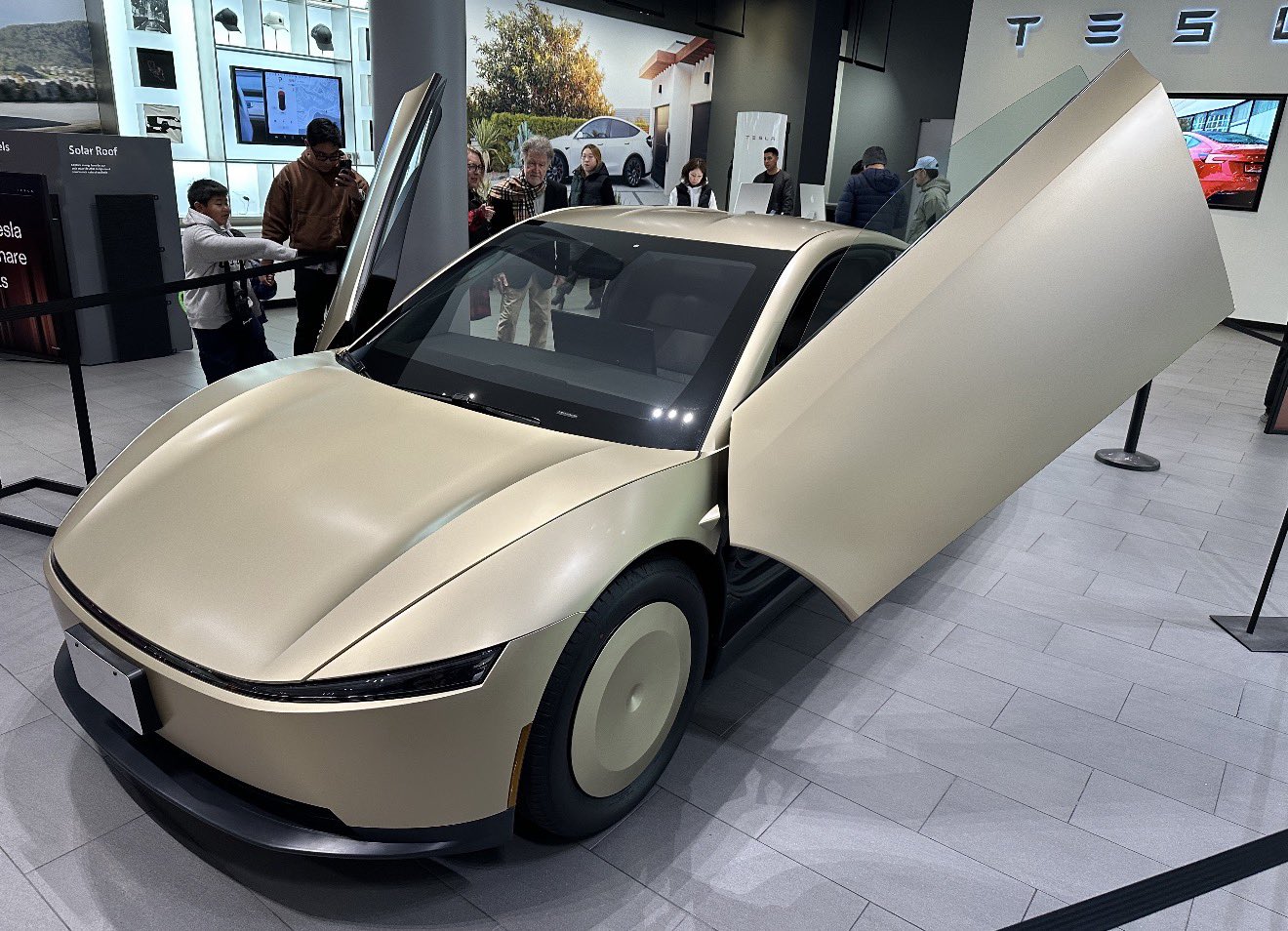News
Fiat Could Build Model 3 Rival in 12 Months Claims Its CEO
FiatChrysler chairman Sergio Marchionne said at the company’s annual meeting last Friday that if the Model 3 is profitable, Fiat could build a car like it with Italian styling in 12 months.


Sergio Marchionne at FCA annual meeting in Amsterdam on April 15. Credit: FCA
Sergio Marchionne, CEO of FiatChrysler, said during the company’s annual meeting in Amsterdam last Friday that if Tesla can make money on the Model 3, Fiat will build a competitor and have it on the market within 12 months. Those are brave words for a man whose Chrysler division is planning to stop making mid size sedans entirely.
Saying he has nothing but the highest regard for Elon Musk, Marchionne also said, “I am not surprised by the high number of reservations” (400,000 and counting) for the Model 3. “But then the hard reality comes in … making cars, selling them and making money doing so.”He added, if Elon “can show me that the car will be profitable at that price, I will copy the formula, add the Italian design flair, and get it to the market within 12 months.”
Unlike most car company CEOs, who tend to speak in measured terms, Marchionne has a reputation for blurting out whatever is on his mind. His remarks are viewed by many as proof that he has little to no understanding of how the automotive market is shifting beneath his feet.
They see him as the poster boy for how most automakers are still clueless about the electric car revolution and have no effective plans to join it. Several compare traditional car companies to the likes of Kodak and Polaroid — industry giants who simply could not adapt fast enough to digital photography tehcnology. IBM is another prime example of a once mighty company decimated by technological change.
Just a few years ago, Marchionne was begging people not to buy the Fiat 500e electric car because his company lost $14,000 on every car sold. Earlier last week, he told Automotive News that he sees Toyota, Ford, or Volkswagen as companies that could potential merge with FiatChryler. In other words, Marchionne is looking for a suitor who will buy the company while it still has value.
The decision to stop building the Dodge Dart and Chrysler 200 is instructive. By all accounts, both are pretty good cars that match up well against the competition. Neither has been particularly profitable, but the decision to stop making them is rooted in the arcane provisions of the federal regulations. Under the CAFE rules, the average fuel economy a company has to achieve varies according to the “footprint” of its fleet. The larger the vehicle it sells, the lower its CAFE numbers can be.
In this era of low gas prices, Chrysler is killing it with its Jeep lineup and sales of hulking pickup trucks. By ditching mid size sedans, it can sell more vehicles with atrocious gas mileage and be in compliance with CAFE mandates. At the very least, it will have to buy fewer credits from other companies. Does that sound like a company that it looking to the future?
There are so many problems with Marchionne’s position, it’s hard to know where to begin. The thought of a Model 3 clone that looks like an Alfa Romeo may have some surface appeal, but where is the network of recharging stations for customers travelling away from home? Where are the autonomous driving systems or the interior that will “feel like a spaceship,” in Elon’s words?
Is anyone at Tesla worried by Marchionne’s idle boast? If they are, they aren’t showing it.
Source: Fortune, Photo credit: FCA.com

News
Another Tesla Model 3 variant sold out for January 2026 in China
A look at Tesla China’s order page shows that new Model 3 LR RWD orders now have an estimated delivery date of February 2026.

Another Tesla Model 3 variant in China appears to have sold out for January 2026, with the vehicle now showing an estimated delivery date of February 2026 for new orders. This bodes well for the all-electric sedan, which has maintained notable sales despite more affordable rivals like the Xiaomi SU7 and its crossover sibling, the Model Y.
Model 3 LR RWD joins February 2026 queue
A look at Tesla China’s order page for the all-electric sedan shows that new Model 3 Long Range Rear Wheel Drive orders now have an estimated delivery date of February 2026. Priced from RMB 259,500 ($36,810), the LR RWD sits as the second-lowest-priced trim in Tesla China’s four-variant Model 3 lineup. The move follows a similar delivery timeframe for the Model 3 Performance, which remains the most expensive option for the vehicle, as noted in a CNEV Post report.
The estimated delivery dates of the two remaining Model 3 variants remain unchanged for now. The base RWD version, starting at RMB 235,500, and the LR AWD variant, priced from RMB 285,500, both continue to list estimated delivery times of 4-6 weeks. Tesla China, for its part, has continued to list in-stock Model 3 vehicles and is actively encouraging buyers to select inventory units for delivery before the end of the year.
Model Y delays and policy shifts
Delivery timelines for the Model Y in China are also stretching into 2026. All customized Model Y variants now show February 2026 as their estimated delivery date, except for the entry-level version, which still lists January 2026. Tesla has been urging customers since November to prioritize purchasing inventory vehicles, a push aimed at maximizing year-end deliveries.
Timing matters for Chinese buyers due to upcoming changes in government incentives. China’s new energy vehicle purchase tax exemption will be scaled back in 2026, which means customers who take delivery next year could face higher tax costs compared to those who are able to receive vehicles before the end of the year.
As per data from the China Passenger Car Association, Tesla recorded retail sales of 73,145 vehicles in November, down 0.47% year over year. From January through November, Tesla’s retail sales in China totaled 531,855 units, a 7.37% year-over-year drop.
News
Wedbush’s Dan Ives sees ‘monster year’ ahead for Tesla amid AI push
In a post on X, the analyst stated that the electric vehicle maker could hit a $3 trillion market cap by the end of 2026 in a bullish scenario.

Wedbush analyst Dan Ives is doubling down on Tesla’s (NASDAQ:TSLA) long-term upside. In a post on X, the analyst stated that the electric vehicle maker could hit a $3 trillion market cap by the end of 2026 in a bullish scenario, thanks to the company’s efforts to develop and push its artificial intelligence programs.
An aggressive valuation upside
Ives, Wedbush’s global head of tech research, stated in his post that Tesla is entering a pivotal period as its autonomy and robotics ambitions move closer to commercialization. He expects Tesla’s market cap to reach $2 trillion in 2026, representing roughly 33% upside from current levels, with a bull case up to a $3 trillion market cap by year-end.
Overall, Ives noted that 2026 could become a “monster year” for TSLA. “Heading into 2026, this marks a monster year ahead for Tesla/Musk as the autonomous and robotics chapter begins. We believe Tesla hits a $2 trillion market cap in 2026 and in a bull case scenario $3 trillion by end of 2026… as the AI chapter takes hold at TSLA,” the analyst wrote.
Ives also reiterated his “Outperform” rating on TSLA stock, as well as his $600 per share price target.
Unsupervised Full-Self Driving tests
Fueling optimism is Tesla’s recent autonomous vehicle testing in Austin, Texas. Over the weekend, at least two Tesla Model Ys were spotted driving on public roads without a safety monitor or any other occupants. CEO Elon Musk later confirmed the footage of one of the vehicles on X, writing in a post that “testing is underway with no occupant in the car.”
It remains unclear whether the vehicle was supported by chase cars or remote monitoring, and Tesla has not disclosed how many vehicles are involved. That being said, Elon Musk stated a week ago that Tesla would be removing its Safety Monitors from its vehicles “within the next three weeks.” Based on the driverless vehicles’ sightings so far, it appears that Musk’s estimate may be right on the mark, at least for now.
News
Production-ready Tesla Cybercab hits showroom floor in San Jose
Tesla has implemented subtle but significant updates to both the Cybercab’s exterior and interior elements.

Tesla has showcased what appears to be a near-production-ready Cybercab at its Santana Row showroom in San Jose, California, giving visitors the closest look yet at the autonomous two-seater’s refined design.
Based on photos of the near-production-ready vehicle, the electric vehicle maker has implemented subtle but significant updates to both the Cybercab’s exterior and interior elements, making the vehicle look more polished and seemingly more comfortable than its prototypes from last year.
Exterior and interior refinements
The updated Cybercab, whose photos were initially shared by Tesla advocate Nic Cruz Patane, now features a new frameless window design, an extended bottom splitter on the front bumper, and a slightly updated rear hatch. It also includes a production-spec front lightbar with integrated headlights, new wheel covers, and a license plate bracket.
Notably, the vehicle now has two windshield wipers instead of the prototype’s single unit, along with powered door struts, seemingly for smoother opening of its butterfly doors. Inside, the Cybercab now sports what appears to be a redesigned dash and door panels, updated carpet material, and slightly refined seat cushions with new center cupholders. Its legroom seems to have gotten slightly larger as well.
Cybercab sightings
Sightings of the updated Cybercab have been abundant in recent months. At the end of October, the Tesla AI team teased some of the autonomous two-seater’s updates after it showed a photo of the vehicle being driven through an In-N-Out drive-through by employees in Halloween costumes. The photos of the Cybercab were fun, but they were significant, with longtime Tesla watchers noting that the company has a tradition of driving its prototypes through the fast food chain’s drive-throughs.
Even at the time, Tesla enthusiasts noticed that the Cybercab had received some design changes, such as segmented DRLs and headlamps, actual turn signals, and a splitter that’s a lot sharper. Larger door openings, which now seem to have been teasing the vehicle’s updated cabin, were also observed at the time.








